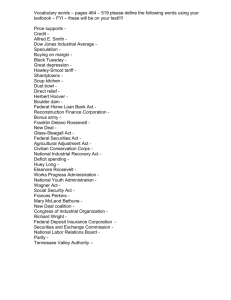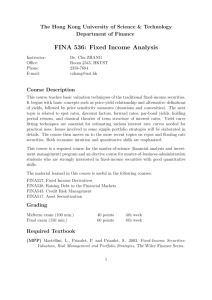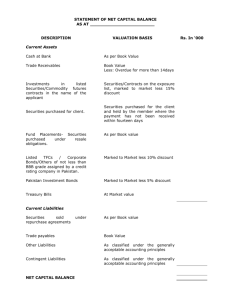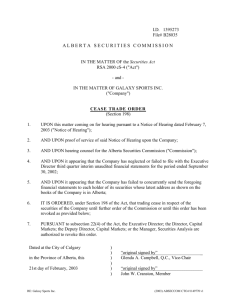Emerging Financial Markets in the Global Economy,
advertisement
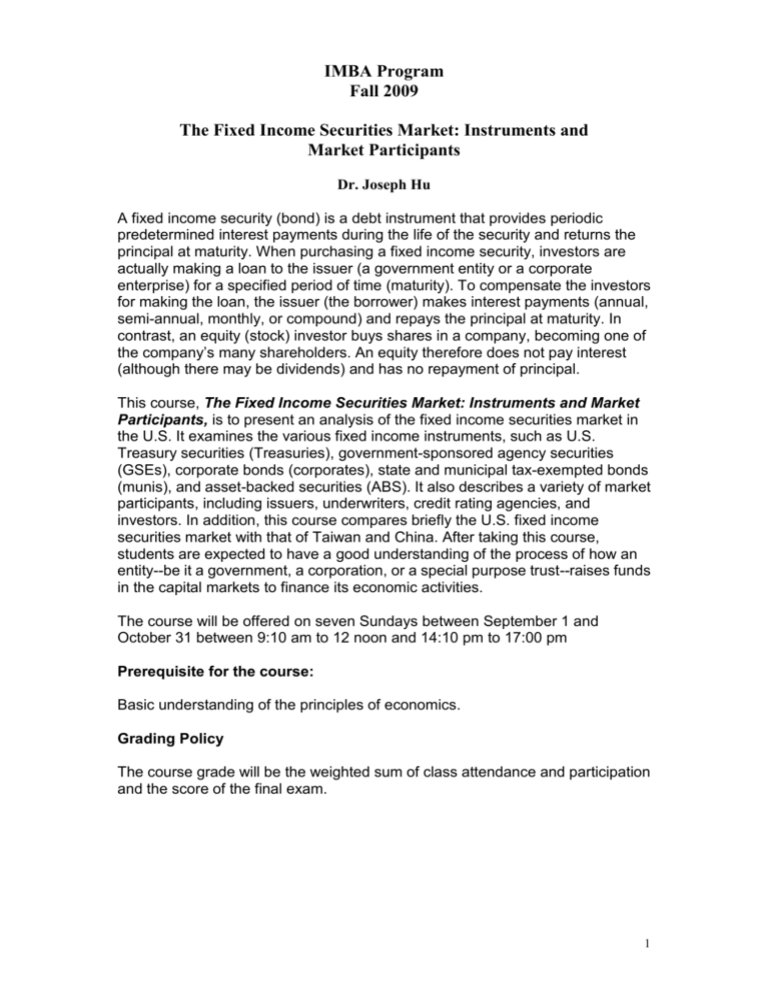
IMBA Program Fall 2009 The Fixed Income Securities Market: Instruments and Market Participants Dr. Joseph Hu A fixed income security (bond) is a debt instrument that provides periodic predetermined interest payments during the life of the security and returns the principal at maturity. When purchasing a fixed income security, investors are actually making a loan to the issuer (a government entity or a corporate enterprise) for a specified period of time (maturity). To compensate the investors for making the loan, the issuer (the borrower) makes interest payments (annual, semi-annual, monthly, or compound) and repays the principal at maturity. In contrast, an equity (stock) investor buys shares in a company, becoming one of the company’s many shareholders. An equity therefore does not pay interest (although there may be dividends) and has no repayment of principal. This course, The Fixed Income Securities Market: Instruments and Market Participants, is to present an analysis of the fixed income securities market in the U.S. It examines the various fixed income instruments, such as U.S. Treasury securities (Treasuries), government-sponsored agency securities (GSEs), corporate bonds (corporates), state and municipal tax-exempted bonds (munis), and asset-backed securities (ABS). It also describes a variety of market participants, including issuers, underwriters, credit rating agencies, and investors. In addition, this course compares briefly the U.S. fixed income securities market with that of Taiwan and China. After taking this course, students are expected to have a good understanding of the process of how an entity--be it a government, a corporation, or a special purpose trust--raises funds in the capital markets to finance its economic activities. The course will be offered on seven Sundays between September 1 and October 31 between 9:10 am to 12 noon and 14:10 pm to 17:00 pm Prerequisite for the course: Basic understanding of the principles of economics. Grading Policy The course grade will be the weighted sum of class attendance and participation and the score of the final exam. 1 Course Structure: Week 1 Sep 6 Week 2 Sep 13 Week 3 Week 4 Sep 20 Sep 27 Week 5 Oct 4 Week 6 Oct 11 week 7 Oct 18 The U.S. capital markets and flow of funds Introduction of fixed income instruments The process of issuing U.S. Treasuries, GSEs, and corporates The process of issuing munis and ABS The various risks of fixed income securities Credit ratings of corporates, munis, and ABS Bond valuation, the yield curve, and the pricing of fixed income securities The underwriting of fixed income securities (the workings of a Wall Street firm) The broad base of fixed income securities investors The fixed income securities market in Taiwan and China Review of the course Turn in final take-home exam Books: The two books listed below are not required textbooks, although students who are seriously interested in fixed income securities are encouraged to purchase at least one of them, particularly “the Marcia Stigum book,” which is viewed by the financial markets professionals as the bible of fixed income securities. Marcia Stigum and Anthony Crescenzi, Stigum’s Money Market, 4th ed., McGraw-Hill, 2007 Frank Fabozzi, editor, The Handbook of Fixed Income Securities, 5th ed., Irwin Professional Publishing, 1997 Articles: Relevant articles from professional journals, reputable international economic research institutes or leading finance newspapers would be referenced from time to time. Websites: The following website provide information on current market interest rates along with excellent market commentaries and topical research reports on fixed income securities markets. www.bondsonline.com www.federalreserve.gov www.ustrea.gov www.fscey.gov.tw www.chinabond.com.cn 2


